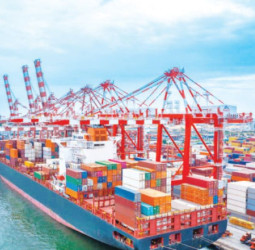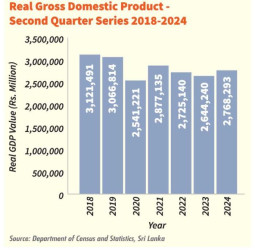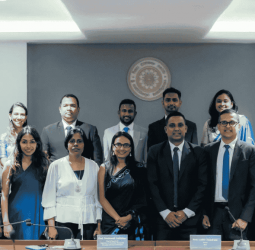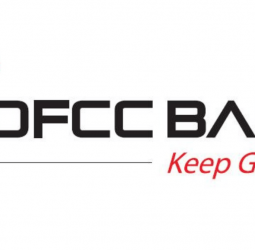The global rating Agency, Fitch says that they expect Sri Lanka’s economic growth to recover to 3.9% in 2024 and average at 3.6% over 2025-2026.
“Real GDP growth, in seasonally adjusted terms, recovered to about 5.0% yoy in 1H24 after contracting by 7 % during 1H23, driven by a pick-up in industrial growth to 11.3% after a contraction of about 18.0% in 1H23.”
Services also recovered by about 2.7% during the same period after a contraction in 1H23.
“We expect further easing of monetary policy over 2024-2026, after the Central Bank of Sri Lanka reduced the standing deposit facility rate by a cumulative 725bp since June 2023, as underlying inflationary pressure remains muted.”
Inflation was about 0.6% in August 2024, in seasonally adjusted terms and has been in the single digits for over a year. A surge in inflation, peaking in September 2022 at around 67%, was successfully curtailed by the central bank.
Foreign-currency (FX) reserves have been improving, with gross FX reserves reaching around USD6 billion in August 2024, against USD4.4 billion at end-2023, partly due to the suspension of external debt service. Other supporting factors include an uptick in tourism and overseas worker remittances.
The current account was in a surplus in 2023 and we expect a surplus in 2024. The sovereign, however, remains dependent on official financing sources without access to international capital markets. Meanwhile Fitch Ratings has affirmed Sri Lanka’s Long-term Foreign-Currency Issuer Default Rating (IDR) at ‘RD’ (Restricted Default) and Long-Term Local-Currency IDR at ‘CCC-’.
The sovereign remains in default on its foreign currency obligations, while restructuring negotiations are ongoing with Sri Lanka’s private external creditors. The authorities’ recent announcement that a preliminary debt restructuring agreement has been reached, in principle, with members of the steering committee of the Ad Hoc Group of Bondholders (representing foreign holders of Sri Lanka’s international sovereign bonds) and China Development Bank (A+/Negative) suggests progress is being made.
The agreement comes after the April 12, 2022 announcement suspending debt servicing on several categories of external debt, including bonds issued in international capital markets, foreign currency-denominated loans and credit facilities with commercial banks and institutional lenders.
The Long-Term Foreign-Currency IDR has been on ‘RD’ since May 2022, once the grace period expired. After Sri Lanka’s September 2024 Presidential election Fitch believes the result adds uncertainty to the country’s policy direction and the upcoming 2025 budget, to be adopted by November 2024, could offer clarity on the new government’s policies.
Sri Lanka completed the local-currency portion of its domestic debt optimisation in September 2023. This followed the exchange of the Central Bank of Sri Lanka’s treasury bills and provisional advance into new treasury bonds and bills. “This led us to upgrade the Local-Currency IDR to ‘CCC-’”
Domestic bank operating environment continues to show signs of stabilisation
Fitch rating says that though the banking sector’s non-performing loans remain high, partly owing to the economic stress associated with the sovereign default the domestic bank operating environment continues to show signs of stabilisation, in line with improved economic indicators.
This supports the recovery in banks’ operational flexibility. The completion of the local-currency portion of Sri Lanka’s domestic debt optimisation was a major step towards reducing the impact of the sovereign’s debt restructuring on the banking sector. The IMF forecasts Sri Lanka’s gross general government debt/GDP ratio to decline only gradually to about 103% of GDP by 2028, from about 116% in 2022. This forecast incorporates a local- and foreign-currency debt restructuring scenario. However, this level of debt would still be elevated, even after the restructuring.
Source: Daily News
You Must be Registered Or Logged in To Comment Log In?


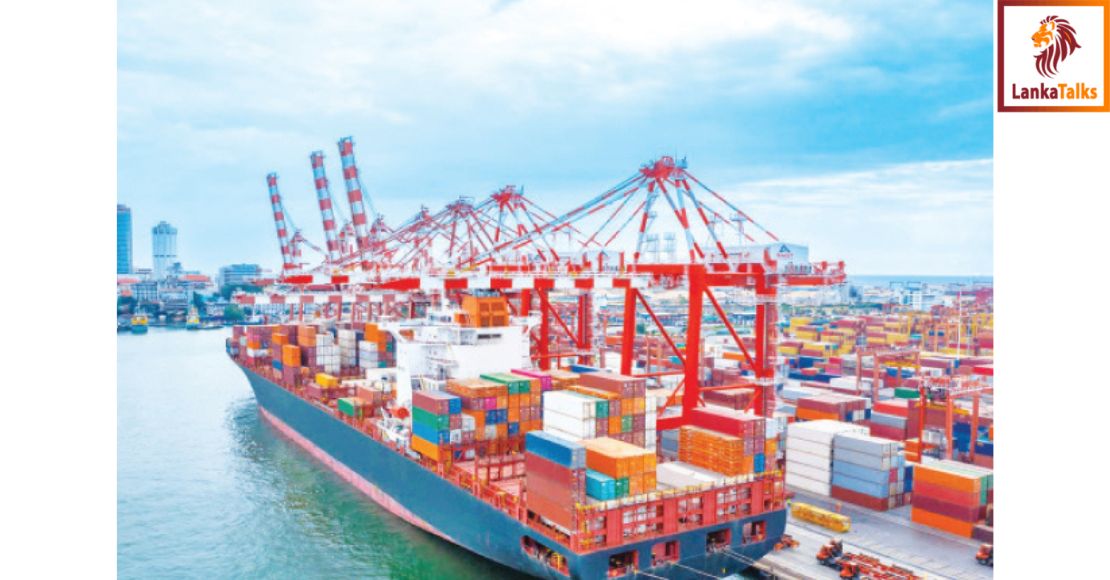
 Mifra
Mifra